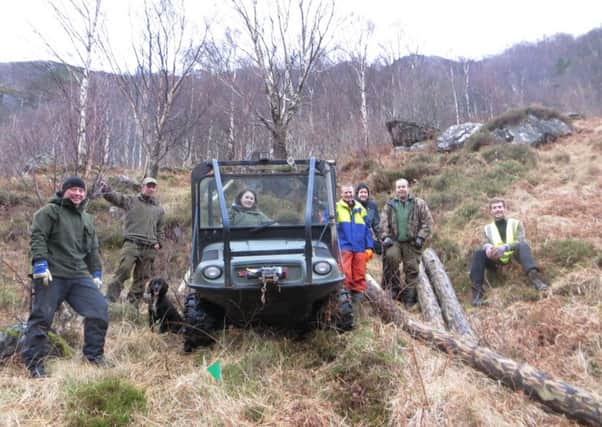Regeneration of Glen Nevis native woodland underway
This article contains affiliate links. We may earn a small commission on items purchased through this article, but that does not affect our editorial judgement.


The Caledonian Pinewood is currently in an “unfavourable” condition and work has been ongoing to collect local seed and root stock from Scots pine and aspen to provide seedlings for habitat regeneration.
This is a step towards creating a seed source and it is hoped that it may form the basis for larger woodland habitat regeneration over the next three years.
Advertisement
Hide AdAdvertisement
Hide AdThe initiative - a collaboration the Nevis Landscape Partnership (NLP),multinational metals and mining firm Rio Tinto, who have a base in the Highlands, and property consultants Bidwells - aims to expand woodland cover in upper Glen Nevis as part of the ‘Future Forests’ conservation project, supported by the Heritage Lottery Fund.
Lewis Pate, Nevis Landscape Partnership Conservation Officer, said: “We have been working hard to establish locally collected seedlings to plant out in the Glen in an attempt to start a natural regeneration process that has been missing for many years.
“Having the support of the local landowner is crucial to the success of the project and we have had excellent support from Rio Tinto and their managing agents Bidwells both financially and on the ground with advice and logistical support from their professional staff.
“It is a very exciting project and could form the start of a much larger regeneration scheme, linking in with an existing Rio Tinto-led, larger broadleaf woodland scheme around the Polldubh area.
“The idea is to create continuous forest cover from the lower glen plantations and natural broadleaf woodlands, into the upper glen and onto John Muir Trust ground at the gorge.
“If we can expand the scheme during the course of the project, then Glen Nevis might look very different in years to come with higher biodiversity value and more robust and connected woodland habitats.”
The partnership aims to improve public understanding of the habitat while simultaneously contributing to the improvement of the environment for future generations to enjoy.
Jim Beattie, Rio Tinto estates manager, said: “Glen Nevis is an iconic place in Scotland and if we can do something to maintain or indeed improve this remnant of ancient Caledonian woodland it will be a job well done.
Advertisement
Hide AdAdvertisement
Hide Ad“This project may appear like a small token gesture but it has taken a lot of time and effort to get this far. During the consultation numerous stakeholders were involved - each with an enthusiasm to protect this fragile habitat.
“We are delighted that the local community got behind this project and that the local schools helped by growing the seeds collected. Our thanks to the NLP which has been instrumental in bringing this all together.”
Another NLP project is focussing on improving the main mountain track with further ‘regeneration’ enclosures planned for some of the path corners.
This is to encourage natural habitat regeneration and the fencing will eventually be removed once the trees have grown enough to be safe from browsing deer.
“Significant funds are being directed at raising awareness of local natural heritage conservation and providing safe enjoyable access for the thousands of recreational users that climb Britain’s highest mountain each year,” said Mr Pate.
“These integrated land management projects rely on successful partnership working between the local stakeholders to be effective and there is an excellent level of support from the working partners to drive these projects forward.”
DOWNLOAD THE SCOTSMAN APP ON ITUNES OR GOOGLE PLAY